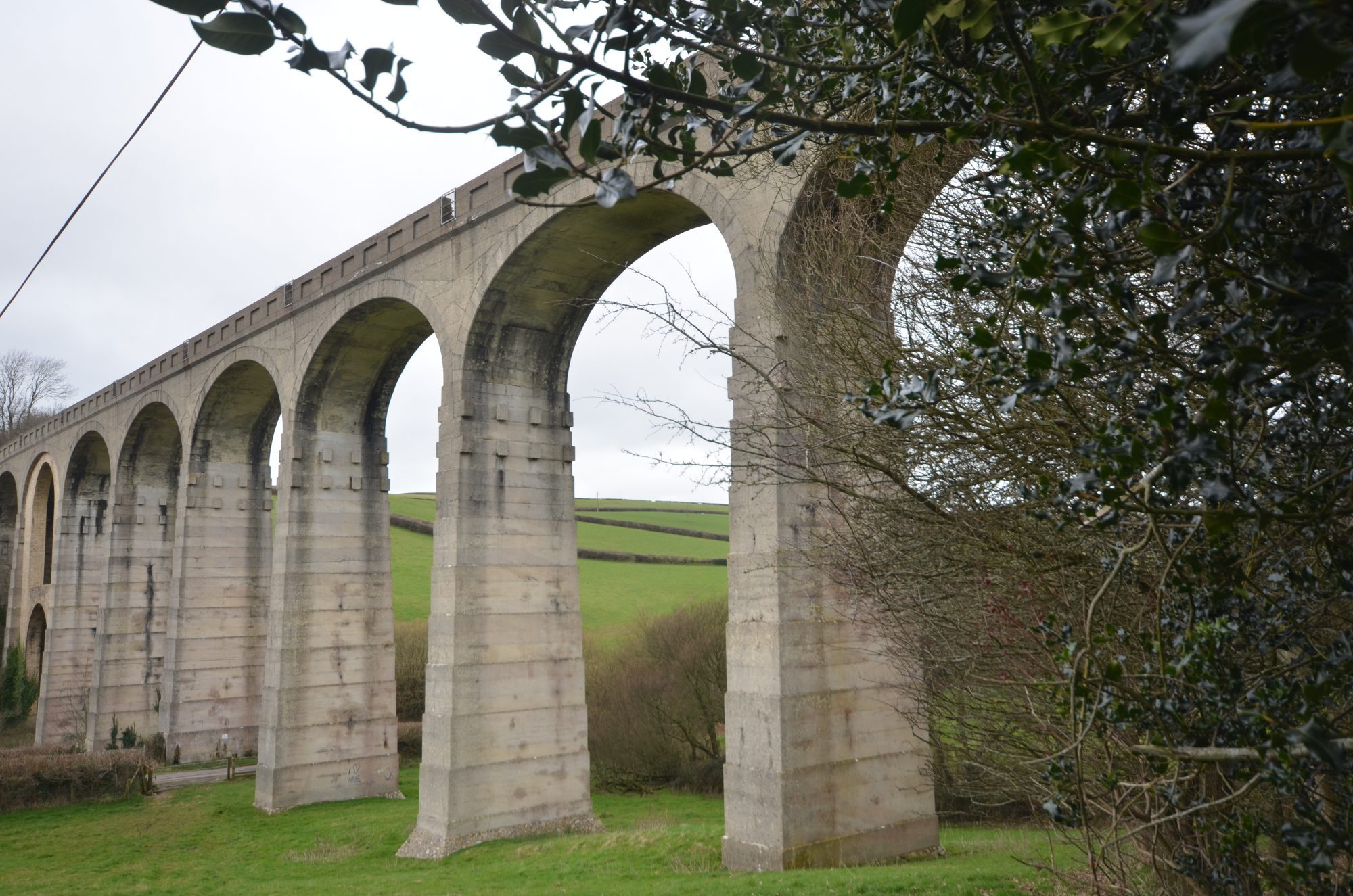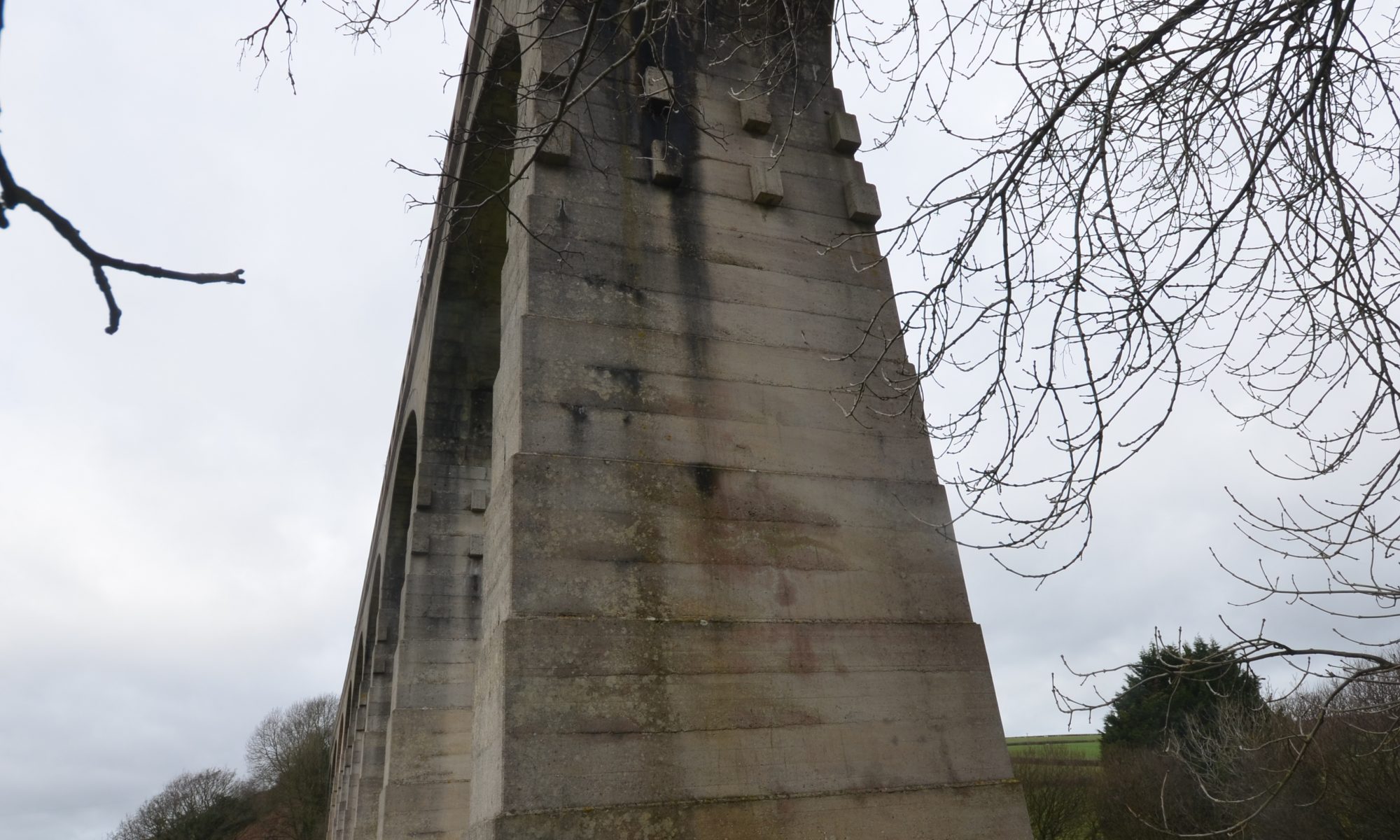The Lyme Regis branch line connected Lyme Regis with the mainline railway at Axminster, running through picturesque rural countryside on the Dorset – Devon border.
It opened in 1903 and on summer weekends it was very busy with high passenger numbers with through carriages from London on many services. The line achieved high levels of interest among railway enthusiasts in later years because a veteran type of steam engine, the Adams ‘Radial’ Tank 4-4-2T locomotive; this engine class survived long after the type had been superseded in its original area of use in the London suburbs.
The line was 6 miles long, starting from Axminster station, at the level of the River Axe there, it climbed, running broadly southerly to Combpyne, where the only intermediate station was sited. Turning broadly east, it descended to Lyme Regis, crossing an arm of the River Lim on Cannington Viaduct, a short walk from the Blacksmith’s Cottage and passing through Uplyme through what is now Barnes Meadow.
Cannington Viaduct is a Grade II listed structure and is the only significant structure on the branch, 203 yards long with ten elliptical arches of 50 feet span, 92 feet high. It was constructed of mass concrete with pre-cast concrete voussoirs; it was one of the earliest major structures of the type in England, and the second highest of the type. Cement was brought to the Cobb harbour at Lyme Regis, and to the construction site by a 1,000 foot cableway. Crushed flint from locally excavated material was used for the aggregate.
During its construction the west abutment and the adjacent pier slipped during the process of tipping fill material behind it, and it and the first pier settled significantly, distorting the first arch, delaying the opening. The displaced foundations were stabilised and the third arch was strengthened with a wall the distorted first arch was given a brick arch ring. You can still see these.
 The gradient was too steep to permit a station in Uplyme. The station at Lyme Regis was on the north of the town at what is now the Health Centre and Jewsons, because immediately beyond t the land falls steeply towards the town.
The gradient was too steep to permit a station in Uplyme. The station at Lyme Regis was on the north of the town at what is now the Health Centre and Jewsons, because immediately beyond t the land falls steeply towards the town.
Passenger use declined in the years following the Second World War, and only summer weekends remained busy. The line was scheduled for closure, and this was implemented on 29 November 1965.
The main station building at Lyme Regis was wooden, and after closure it was dismantled and re-erected at Alresford station, on the Watercress Line in Hampshire. The imposing Cannington Viaduct is a Grade II listed structure.
There is a proposal to build a narrow gauge line between Axminster and a park and ride on the coastal road to Seaton, part of which would use part of the trackbed of the former Lyme Regis branch.
Unlike some of the closed lines, the land along much of it has now become farmland and even part of peoples gardens, which means it will never be reestablished as a walking or cycling route. There are a number of choices of walks around the Cannington Viaduct from the Blacksmith’s Cottage including quiet lanes and footpaths. In the winter it may be best to limit the footpaths and this route suggestion includes just two fields to cross.

